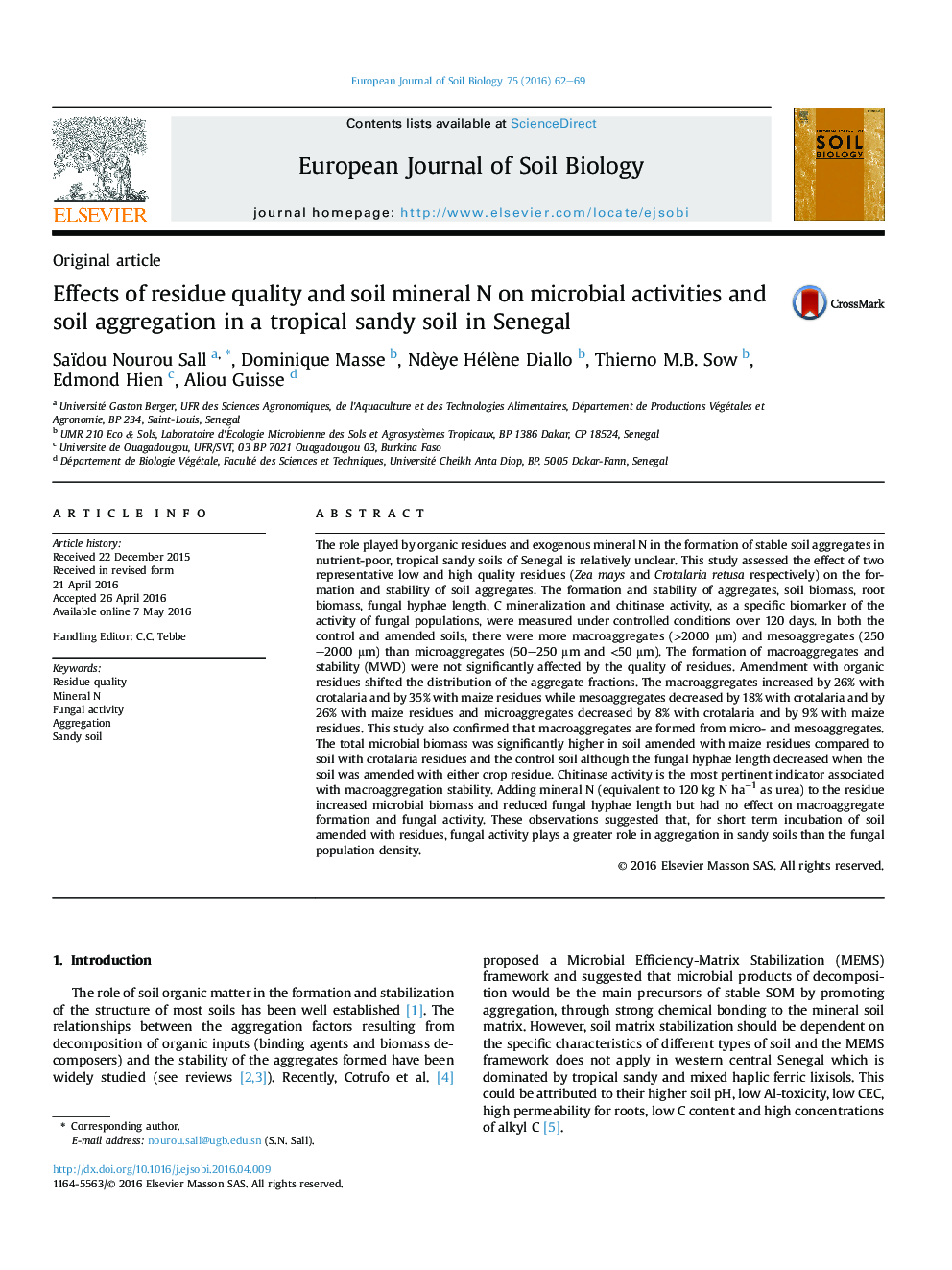| کد مقاله | کد نشریه | سال انتشار | مقاله انگلیسی | نسخه تمام متن |
|---|---|---|---|---|
| 4391638 | 1618117 | 2016 | 8 صفحه PDF | دانلود رایگان |

• In tropical sandy soil macroaggregates were formed from micro- and mesoaggregates.
• Quality of residue and fungal hyphae length are not the main drivers for aggregates formation.
• Chitinase activity is the most pertinent indicator associated with aggregation.
• Added exogenous N increase microbial biomass and decrease fungal hyphae length.
• Exogenous N did not affect the fungal activity and macroaggregate formation and stability.
The role played by organic residues and exogenous mineral N in the formation of stable soil aggregates in nutrient-poor, tropical sandy soils of Senegal is relatively unclear. This study assessed the effect of two representative low and high quality residues (Zea mays and Crotalaria retusa respectively) on the formation and stability of soil aggregates. The formation and stability of aggregates, soil biomass, root biomass, fungal hyphae length, C mineralization and chitinase activity, as a specific biomarker of the activity of fungal populations, were measured under controlled conditions over 120 days. In both the control and amended soils, there were more macroaggregates (>2000 μm) and mesoaggregates (250–2000 μm) than microaggregates (50–250 μm and <50 μm). The formation of macroaggregates and stability (MWD) were not significantly affected by the quality of residues. Amendment with organic residues shifted the distribution of the aggregate fractions. The macroaggregates increased by 26% with crotalaria and by 35% with maize residues while mesoaggregates decreased by 18% with crotalaria and by 26% with maize residues and microaggregates decreased by 8% with crotalaria and by 9% with maize residues. This study also confirmed that macroaggregates are formed from micro- and mesoaggregates. The total microbial biomass was significantly higher in soil amended with maize residues compared to soil with crotalaria residues and the control soil although the fungal hyphae length decreased when the soil was amended with either crop residue. Chitinase activity is the most pertinent indicator associated with macroaggregation stability. Adding mineral N (equivalent to 120 kg N ha−1 as urea) to the residue increased microbial biomass and reduced fungal hyphae length but had no effect on macroaggregate formation and fungal activity. These observations suggested that, for short term incubation of soil amended with residues, fungal activity plays a greater role in aggregation in sandy soils than the fungal population density.
Journal: European Journal of Soil Biology - Volume 75, July–August 2016, Pages 62–69